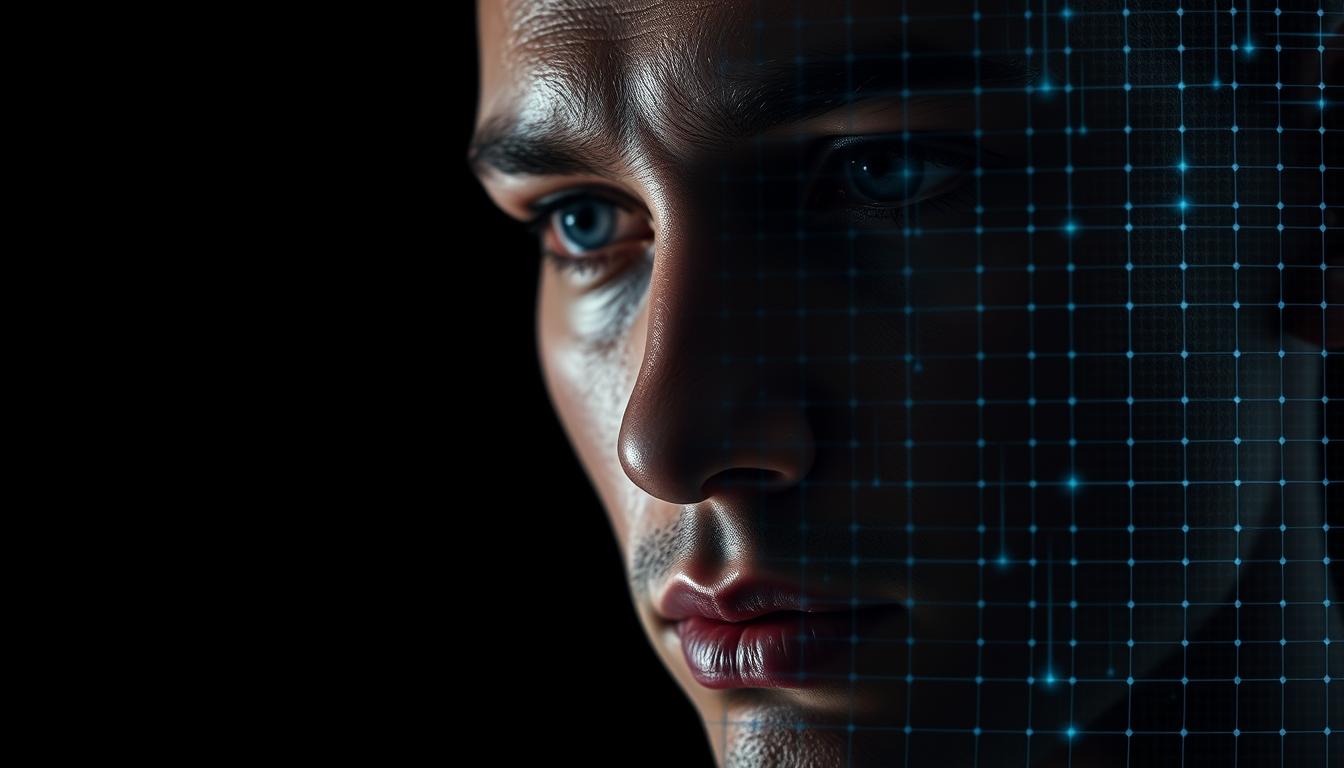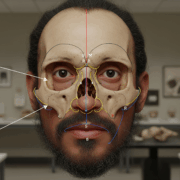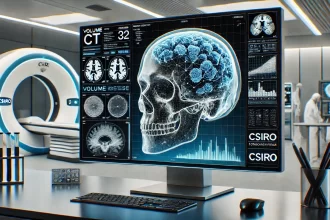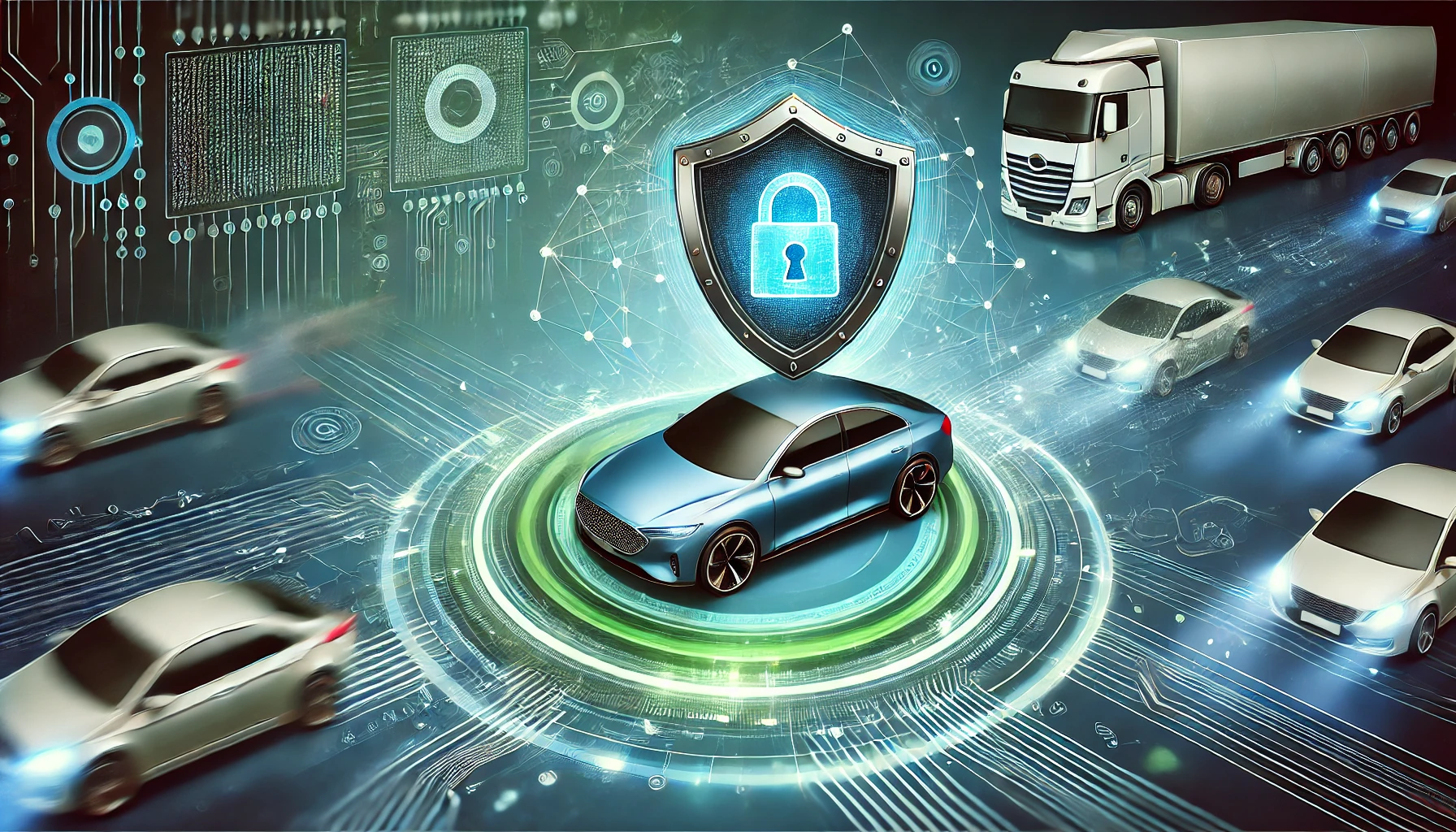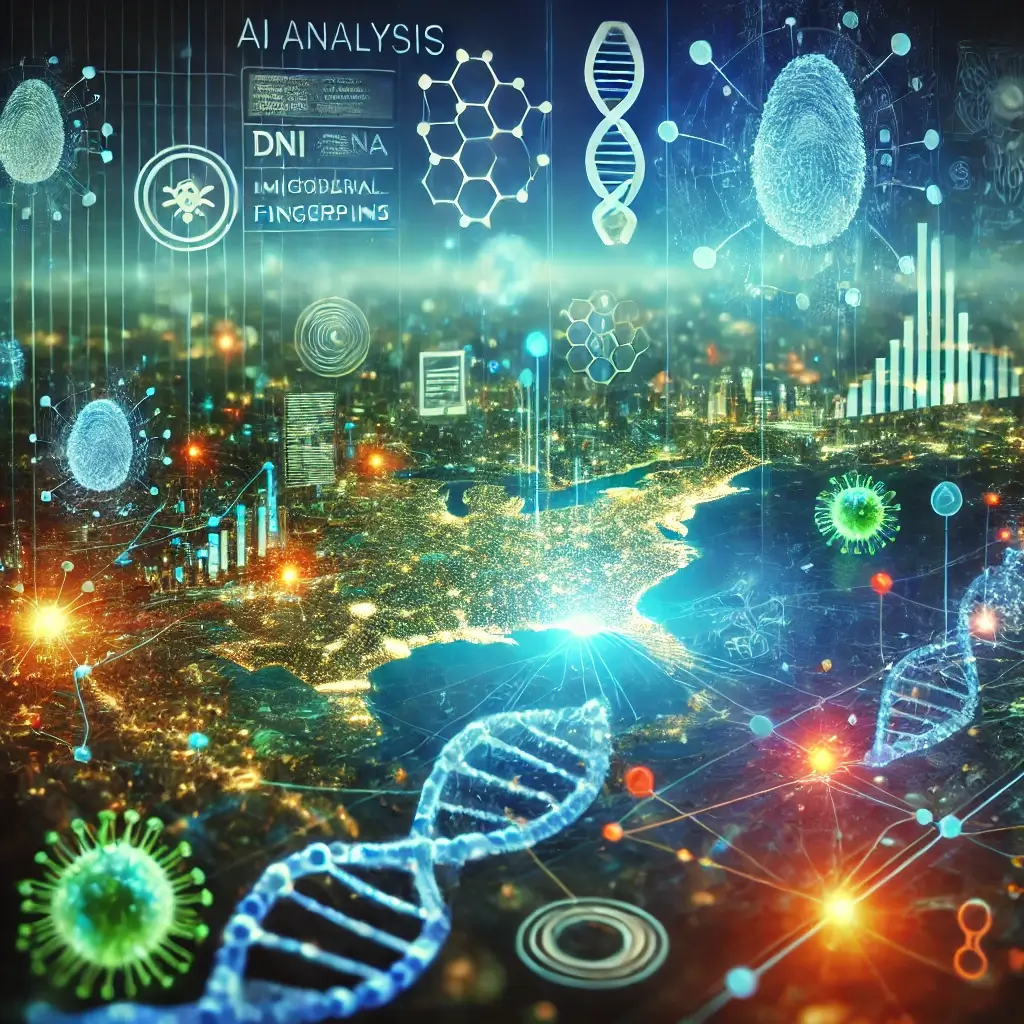Have you ever unlocked your phone with just a glance? That’s AI-powered facial recognition at work, and it’s just the beginning. The integration of Artificial Intelligence (AI) into facial recognition technology is rapidly transforming various sectors, from bolstering security to enhancing consumer experiences, and it’s reshaping forensic investigations as we know them.
- The Evolution of Facial Recognition Technology
- How AI in Facial Recognition Works
- Security Applications and Benefits
- Law Enforcement and Public Safety Implementation
- Border Control and National Security Systems
- Access Control and Secure Authentication
- Commercial and Consumer Applications
- Retail Analytics and Customer Experience Enhancement
- Banking and Financial Services Security
- Smartphone Authentication and Personal Devices
- Precision and Speed Improvements
- Privacy Concerns and Ethical Considerations
- Mass Surveillance and Civil Liberties Issues
- Data Storage and Protection Challenges
- Algorithmic Bias and Discrimination Concerns
- Consent and Transparency Problems
- Regulatory Landscape and Compliance
- Case Studies: AI Facial Recognition in Action
- Future Trends in AI-Powered Facial Recognition
- Conclusion: Balancing Security and Privacy in the Age of Facial Recognition
- FAQs:
- What is facial recognition technology, and how does it work?
- How has AI improved facial recognition technology?
- What are the security applications of facial recognition technology?
- What are the commercial and consumer applications of facial recognition technology?
- How can algorithmic bias and discrimination be addressed in facial recognition technology?
- What is the regulatory landscape for facial recognition technology?
- What are the future trends in AI-powered facial recognition?
At SimplyForensic.com, we recognize the crucial role AI plays in contemporary forensic science
The Evolution of Facial Recognition Technology
Facial recognition has come a long way from its humble beginnings. What was once a labor-intensive, manual comparison of features has now blossomed into a highly automated and sophisticated process, thanks to cutting-edge AI.
For a broader understanding of the foundational concepts and historical journey of this technology, you can refer to our detailed post on Facial Recognition: A Comprehensive Exploration.
From Manual to Automated Systems
In the 1960s, early attempts at facial recognition involved researchers like Woodrow Bledsoe manually measuring facial features. This rudimentary “pattern matching” was slow, inefficient, and highly prone to human error. The advent of computerized systems marked a significant shift, with algorithms gradually becoming more capable of handling complex facial data Information in analog or digital form that can be transmitted or processed. Read Full Definition.
Information in analog or digital form that can be transmitted or processed. Read Full Definition.
The true leap forward came with the advent of AI and machine learning (ML). These advancements paved the way for more accurate, efficient, and scalable facial recognition technologies. Automated systems can now process vast amounts of data at lightning speed, making them invaluable across a wide range of applications.
Key Milestones in Facial Recognition Development
The timeline of facial recognition development is a testament to rapid innovation:
- 1960s: The first semi-automated facial recognition systems emerged, led by a pioneering research team helmed by Woodrow Bledsoe, although they were basic.
- 1988: Kirby and Sirovich introduce the “Eigenface” approach (representing faces using principal component analysis (PCA)), applying linear algebra for whole-face analysis.
- 1990s: Turk and Pentland demonstrate real-time Eigenface recognition. More sophisticated algorithms are developed, improving performance against variations in lighting and pose.
- 2000s: Widespread adoption of facial recognition for security and surveillance begins.
- 2012 onwards: Deep learning “crashes the party,” allowing AI systems to learn from millions of examples and recognize faces with unprecedented accuracyIn scientific and measurement contexts, "accuracy" refers to the degree of proximity or closeness between a measured value and the true or actual value of the measured quantity. Accuracy indicates how well a measurement reflects Read Full Definition.
- 2014-2015: Breakthroughs, such as Facebook’s DeepFace and Google’s FaceNet, achieve near-human-level accuracy.
- 2017: Apple’s iPhone X introduces Face ID, bringing neural network-based facial recognition to consumer devices.
This rapid progression underscores how quickly the technology has matured from experimental to commonplace.
How AI in Facial Recognition Works
The remarkable success of modern facial recognition technology hinges on the powerful capabilities of AI’s deep learning. These algorithms learn from immense datasets, continuously refining their precision and speed with each iteration.
Core AI Algorithms and Machine Learning Models
Facial recognition software relies on sophisticated ML models that meticulously dissect facial biometrics. These models are honed through extensive training on diverse datasets, enabling them to identify the unique patterns and features that distinguish individuals.
Key components of these models include:
- Convolutional Neural Networks (CNNs): The workhorses for image processing, extracting local features in a grid-like pattern.
- Recurrent Neural Networks (RNNs) Are Useful for analyzing sequences of data, aiding in the tracking of facial movements or expressions.
- Support Vector Machines (SVMs): Used for classifying facial features into distinct categories.
- Generative Adversarial Networks (GANs): Can generate synthetic face data, improving recognition even with limited training data.
- Siamese Networks: Excellent for comparing the similarity between faces, crucial for matching against databases.
Deep Learning and Neural Networks in Facial Analysis
Deep learning, powered by intricate neural networks, has fundamentally revolutionized facial recognition systems. By stacking multiple neural layers, these systems achieve a profound level of abstraction, enabling them to perform facial analysis with unparalleled accuracy.
The process typically involves:
- Face Detection: The initial step, where the system identifies the presence of a face within an image or video.
- Face Alignment: Crucial for accurate analysis, this step ensures facial features are correctly oriented. Techniques like affine transformation normalize the face, enhancing recognition under different conditions.
- Feature Extraction: The system isolates and processes unique facial characteristics (e.g., the distance between the eyes, the shape of the jawline) and converts them into a mathematical representation called a faceprint.
- Face Matching: The generated faceprint is then compared against a database of known faces. Sophisticated matching techniques measure similarity to determine a match, which can happen in milliseconds.
| Technique | Description | Application |
| Face Detection | Locates and isolates the face within an image | Enhances the accuracy of facial analysis |
| Face Alignment | Aligns the face to a standard position | Enhances accuracy of facial analysis |
| Feature Extraction | Captures unique facial characteristics, creating a faceprint | Forms the basis for comparison |
| Face Matching | Compares the faceprint against a database | Determines identity or verifies authenticity |
Security Applications and Benefits
AI-powered facial identification is rapidly transforming the security and surveillance sectors, becoming a pivotal tool for accurately identifying and authenticating individuals.
Law Enforcement and Public Safety Implementation
Law enforcement agencies are increasingly leveraging facial recognition technology to:
- Identify suspects by cross-referencing surveillance footage with criminal databases.
- Locate missing persons more quickly.
- Prevent crimes by monitoring crowded areas and detecting potential threats in real-time.
The ability to scan large crowds and analyze surveillance footage rapidly significantly boosts public safety and aids forensic investigations.
Border Control and National Security Systems
At border control points, facial recognition is vital for:
- Verifying travelers’ identities against their travel documents to streamline processes.
- Preventing identity fraud and detecting security threats, thereby bolstering national security.
| Application | Benefits |
| Border Control | Prevents identity fraud, enhances national security, speeds up processing |
| Law Enforcement | Aids in suspect identification, enhances public safety, and speeds investigations. |
| Access Control | Aids in suspect identification, enhances public safety, and speeds investigations |
Access Control and Secure Authentication
For secure authenticationVerifying the identity of a user, process, or device, often as a prerequisite to allowing access to resources in an information system. Read Full Definition in workplaces, financial institutions, and government facilities, facial recognition provides a convenient and robust method of access control, reducing reliance on traditional methods such as ID cards and passwords. The benefits include enhanced security, improved efficiency, and a more convenient user experience.
Commercial and Consumer Applications
Artificial intelligence in facial recognition is revolutionizing the way businesses and consumers interact with technology, enhancing security and improving the user experience across various sectors.
Retail Analytics and Customer Experience Enhancement
Facial recognition technology is transforming retail by analyzing customer demographics, preferences, and behaviors. This data enables retailers to:
- Refine marketing strategies with personalized services.
- Enhance customer experience by identifying and rewarding loyal customers with tailored discounts.
- Increase security through surveillance and monitoring to reduce shoplifting.
Banking and Financial Services Security
In banking and financial services, facial recognition significantly boosts security and helps prevent fraud. AI algorithms ensure secure authentication and verification, lowering identity theft risks and streamlining transactions.
Smartphone Authentication and Personal Devices
Facial recognition is a widely used method for smartphone authentication, providing a secure and convenient way to unlock devices. It’s also being integrated into other personal devices, such as laptops and smart home systems, providing touchless authentication and improving daily convenience.
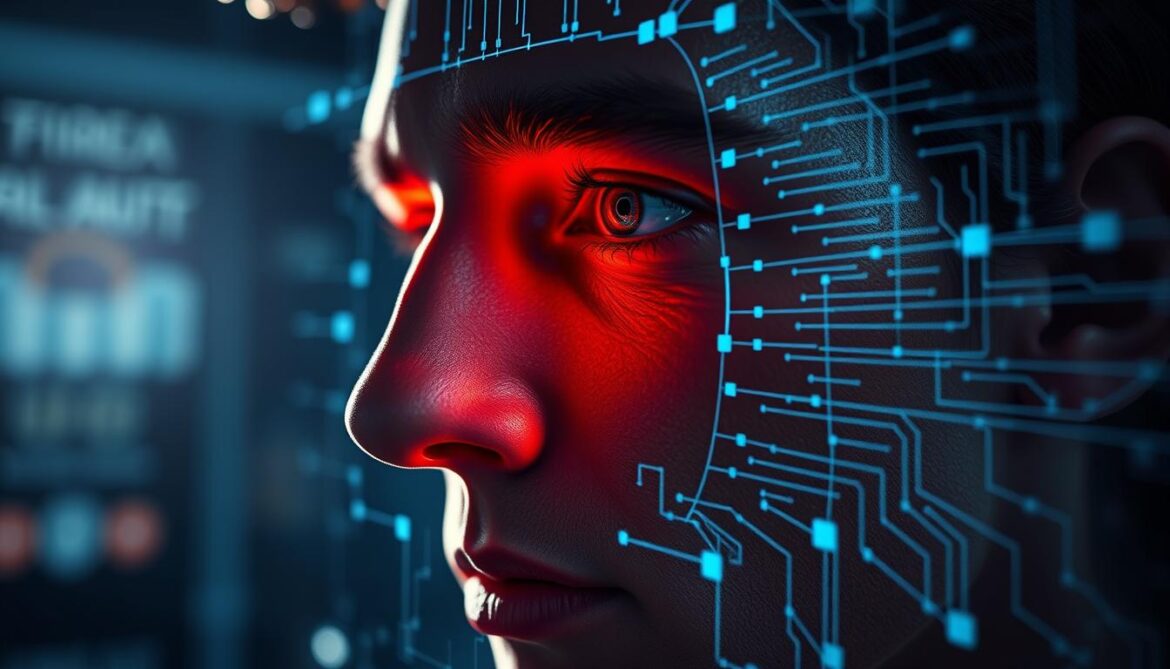
Precision and Speed Improvements
The advancements in AI have led to unparalleled precision and processing speed in facial recognition systems.
Reducing False Positive Rates
Early facial recognition systems were notorious for producing false positives, which led to misidentifications and raised privacy concerns. However, the latest deep learning models have dramatically slashed false favorable rates by up to 95% compared to previous generations. This improvement is driven by neural networks trained on vast, diverse datasets that can distinguish between similar-looking faces with uncanny accuracy, analyzing thousands of micro-features that even humans might miss.
Processing Efficiency Gains
Modern AI facial recognition systems can process and match faces up to 100 times faster than previous generations. What once took seconds now happens in milliseconds. This isn’t just about convenience; it opens up entirely new use cases, such as real-time crowd scanning and simultaneous tracking of thousands of faces in bustling environments. Edge computing further enhances this by processing data directly on devices, reducing latency and making the technology more accessible.
Performance in Challenging Environments
AI has transformed the performance of facial recognition in challenging scenarios. The latest systems can:
- Identify faces in near-darkness with high accuracy.
- Recognize individuals at extreme angles (e.g., up to 70 degrees off-center).
- Match partially obscured faces wearing masks, sunglasses, or hats.
- Function accurately through rain, fog, and other adverse weather conditions.
This breakthrough stems from training neural networks on incredibly diverse datasets that simulate these challenging conditions, allowing the systems to “fill in” missing information.
Privacy Concerns and Ethical Considerations
Despite its numerous benefits, the growing presence of facial recognition technology has heightened significant privacy and ethical concerns.
Mass Surveillance and Civil Liberties Issues
One of the major concerns is the potential for mass surveillance. The ability to track individuals without their explicit consent raises serious questions about civil liberties, primarily when used to monitor public events and gatherings.
Data Storage and Protection Challenges
Storing and protecting vast amounts of sensitive facial biometric data is a critical issue. Current security measures are often insufficient, leading to vulnerabilities and potential data breaches, which can have severe consequences for individuals.
Algorithmic Bias and Discrimination Concerns
Algorithmic biasAlgorithmic bias refers to systematic errors in an AI system that create unfair or discriminatory outcomes. In forensics, this can affect tools like facial recognition, leading to different accuracy rates for different demographic groups and Read Full Definition is a significant ethical challenge. AI systems trained on non-diverse datasets can exhibit biasThe difference between the expectation of the test results and an accepted reference value. Read Full Definition, leading to higher error rates for certain demographic groups (e.g., darker skin tones, women, and younger individuals). Such errors can lead to misidentification and discrimination, particularly in critical applications such as law enforcement. Addressing this requires:
- Diverse training datasets that accurately represent global populations.
- Adversarial networks are used to challenge and improve recognition across different demographics, specifically.
- Regular bias audits by independent third parties.
Consent and Transparency Problems
Many individuals are unaware that their facial data is being collected and how it will be used. This lack of transparency erodes trust. Clear guidelines on consent and transparency are crucial, requiring organizations to inform individuals and obtain explicit consent before processing facial biometric data.
Regulatory Landscape and Compliance
The rapid advancement of facial recognition technology underscores the need for robust regulatory frameworks to ensure its safe and ethical application.
United States Legislation and Policies
In the U.S., regulation is fragmented, involving both federal and state laws. The Biometric Information Privacy Act (BIPA) in Illinois is a notable example of state legislation protecting biometric data. Federal efforts are underway to introduce comprehensive laws, with agencies like the Federal Trade Commission (FTC) emphasizing transparency and consumer protection.
Global Approaches to Facial Recognition Regulation
Internationally, the regulation of facial recognition technology differs greatly. The European Union’s General Data Protection Regulation (GDPR) is a leading example of data protection, including biometric data. Japan and Australia have also implemented regulations, while others are developing guidelines.
The global regulatory scene is a mix of strict laws and voluntary guidelines. Canada’s Digital Charter includes principles for the responsible use of facial recognition technology. In contrast, China has a more lenient approach, with less focus on individual privacy rights.
In summary, the regulatory landscape for facial recognition technology is diverse and constantly evolving. As the technology advances, regulatory bodies must adapt to ensure adequate protection of individual rights while promoting innovation.
Case Studies: AI Facial Recognition in Action
AI-driven facial recognition is actively transforming security and privacy worldwide, demonstrating its flexibility and success across various applications.
Success Stories in Security Enhancement
- Law Enforcement: The London Metropolitan Police and the FBI utilize facial recognition to quickly identify suspects, solve crimes, and enhance public safety by scanning crowds for threats and analyzing surveillance footage.
- Airports and Border Control: Major airports have adopted AI facial recognition for border control, significantly reducing processing times and enhancing security by accurately identifying travelers and minimizing manual checks.
Privacy Protection Implementation Examples
To mitigate privacy concerns, various measures are being implemented:
- Privacy-by-design: Ensuring systems are built with privacy considerations from the ground up.
- On-device facial recognition: Processing data locally on devices (like smartphones) to reduce the risk of data breaches.
- Data minimization: Collecting only essential data.
- Transparent data use and explicit user consent mechanisms.
These examples demonstrate that responsible use of AI facial recognition, with a strong focus on privacy, is achievable.
Future Trends in AI-Powered Facial Recognition
As AI continues to advance, facial recognition technology is poised for major changes, driven by breakthroughs in machine learning and deep learning.
Emerging Technologies and Approaches
Future trends include:
- 3D Facial Recognition: Uses 3D models to enhance accuracy and security, making systems less susceptible to spoofing.
- Deep Learning-based Methods: Continued refinement of CNNs and other neural networks for even better performance.
- Edge AI: Integrating AI processing directly onto devices (e.g., cameras, smartphones) to reduce latency and enhance real-time capabilities.
- Emotion Recognition: Analyzing subtle facial cues to detect emotions, with potential applications in healthcare and mental health diagnostics.
- Behavioral Biometrics: Combining facial recognition with other behavioral patterns for more robust identification and security.
Addressing Current Limitations and Challenges
Researchers and developers are actively working to address existing challenges like accuracy, bias, and privacy through:
- Data Augmentation: Artificially increasing training dataset sizes to improve model robustness.
- Bias Mitigation: Developing sophisticated methods to detect and reduce bias in algorithms.
- Explainable AI (XAI): Making facial recognition systems more transparent by providing insights into their decision-making processes, fostering trust and accountability.
The future of AI-powered facial recognition will be characterized by ongoing innovation, leading to significant improvements in security, convenience, and privacy.
Conclusion: Balancing Security and Privacy in the Age of Facial Recognition
Facial recognition technology, powered by AI, has undeniably revolutionized our approach to security, authentication, and various aspects of daily life. Its applications span from law enforcement and border control to retail analytics and smartphone authentication. However, it also brings forth critical privacy concerns, including mass surveillance, data protection challenges, and inherent algorithmic biases.
To fully harness the potential of facial recognition, finding a delicate balance between security needs and individual privacy rights is paramount. This requires:
- Establishing strong regulatory frameworks that govern data collection, storage, and use.
- Ensuring transparency in data practices and obtaining explicit user consent.
- Implementing robust data protection measures and regularly auditing for vulnerabilities.
- Actively mitigating algorithmic bias to ensure fairness and prevent discrimination.
By adopting a responsible and ethical approach, we can maximize the advantages of AI facial recognition while safeguarding individual rights and maintaining public trust.
FAQs:
What is facial recognition technology, and how does it work?
Facial recognition technology uses AI to identify individuals by analyzing unique facial features. It works by detecting faces, aligning them, extracting key features, and comparing them to a database of known faces to find a match.
How has AI improved facial recognition technology?
AI, particularly deep learning models and neural networks, has dramatically enhanced facial recognition by making systems more accurate, efficient, and capable of learning from vast datasets. This has led to significant improvements in precision and real-time processing.
What are the security applications of facial recognition technology?
Facial recognition is used in security for law enforcement (suspect identification, crime prevention), border control (identity verification, fraud prevention), and access control (securing sensitive areas).
What are the commercial and consumer applications of facial recognition technology?
In commercial and consumer sectors, it’s used for retail analytics (customer experience enhancement), banking (secure transactions, fraud prevention), and smartphone authentication (convenient device unlocking).
How can algorithmic bias and discrimination be addressed in facial recognition technology?
Addressing algorithmic bias requires training AI algorithms on diverse, representative datasets, conducting regular audits to identify and mitigate bias, and implementing cross-demographic accuracy requirements.
What is the regulatory landscape for facial recognition technology?
The regulatory landscape is evolving globally, with varying laws and policies. Examples include the EU’s GDPR and state-specific laws, such as BIPA in the US, which aim to ensure responsible use and protect biometric data.
What are the future trends in AI-powered facial recognition?
Future trends include advancements in 3D facial recognition, further development of deep learning methods, increased integration of Edge AI, and a focus on emotion recognition and explainable AI for greater transparency.



